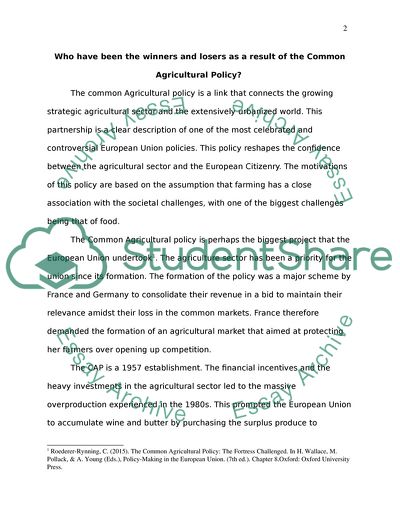Cite this document
(The Common Agricultural Policy Coursework Example | Topics and Well Written Essays - 3000 words, n.d.)
The Common Agricultural Policy Coursework Example | Topics and Well Written Essays - 3000 words. https://studentshare.org/politics/1871220-who-have-been-the-winners-and-losers-as-a-result-of-the-common-agricultural-policy
The Common Agricultural Policy Coursework Example | Topics and Well Written Essays - 3000 words. https://studentshare.org/politics/1871220-who-have-been-the-winners-and-losers-as-a-result-of-the-common-agricultural-policy
(The Common Agricultural Policy Coursework Example | Topics and Well Written Essays - 3000 Words)
The Common Agricultural Policy Coursework Example | Topics and Well Written Essays - 3000 Words. https://studentshare.org/politics/1871220-who-have-been-the-winners-and-losers-as-a-result-of-the-common-agricultural-policy.
The Common Agricultural Policy Coursework Example | Topics and Well Written Essays - 3000 Words. https://studentshare.org/politics/1871220-who-have-been-the-winners-and-losers-as-a-result-of-the-common-agricultural-policy.
“The Common Agricultural Policy Coursework Example | Topics and Well Written Essays - 3000 Words”. https://studentshare.org/politics/1871220-who-have-been-the-winners-and-losers-as-a-result-of-the-common-agricultural-policy.


